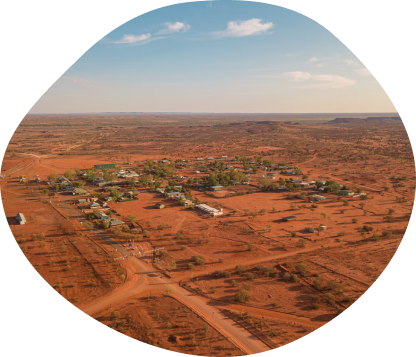AMA Rural and Remote Medical Workforce Policy Summary
Supporting equal access to healthcare for rural communities

AMA Key Recommendations
Senate Inquiry into provision of general practitioner and related primary health services to outer metropolitan, rural, and regional Australians 1A.
General practice requires significant investment and support. Government commitment to implement the Primary Health Care 10-Year Plan is essential to meet this goal.
B.
Classification systems and tools to determine rurality and eligibility for incentives should take into account local circumstances and the unique workforce pressures facing rural and regional communities, particularly in areas where the classification has recently shifted.
C.
Rural and remote general practices require support to remain viable, and any new policies and programs must support the practice and profitability of existing private practices in these areas.
D.
There are important distinctions between outer metropolitan and regional and rural areas and must be reflected in support structures and incentive programs.
E.
National employment reform for GPs in training is required to provide remuneration and entitlements comparable to their hospital-based counterparts and encourage doctors to choose a career in general practice.
F.
Programs that support medical students, doctors in training and fellows to train, live and work in rural and regional areas across all career stages are essential to address geographic distribution.
1.
Investing in the rural medical training pipeline
1.1
Increase the intake of medical students from a rural background to one third of new enrolments. 2
1.2
Increase the number of medical students undertaking clinical placements in rural area to one third. 2
1.3
Expand the Specialist Training Program to 1700 places giving priority rural and generalist training. 3
1.4
Investment in regional teaching hospitals to ensure they have sufficient capacity to host STP-funded non-GP specialist registrars.
31.5
Implement the National Rural Generalist Pathway nationally, and a commitment to ongoing funding. 3
1.6
Encourage end-to-end rural medical training programs that provide positive rural exposure. 4
1.7
Expand capacity for remote learning and supervision in regional/rural sites. 3
1.8
Promotion of regional training and research teaching hospital hubs to grow non-GP specialist capacity outside metropolitan areas. 3
1.9
Implement a Single Employer Model for GPs in Training. 5
1.10
Encourage and support non-GP specialist medical colleges to offer more generalist training places for trainees. 4
2.
Retention of medical practitioners
2.1
Provide rural, emergency/on call and advanced skills loadings and incentives that encourage doctors to work in rural areas and reward long service. 4
2.2
Fund the establishment of networks between rural and city general practices to support non-metropolitan general practice e.g., share administration, provision of locum relief.2
2.3
Provide tax free infrastructure grants to rural practices to support investment in new technologies e.g., telehealth, home monitoring. 2
2.4
Provide extra funding and resources to rural and regional hospitals to support the provision of adequate facilities, improved staffing levels and flexible work arrangements, e.g., core visiting medical officers, locum relief for GPs and non-GP specialists. 6
2.5
Provide family support that includes spousal opportunities/employment, educational opportunities for children, subsidy for housing/relocation and/or tax relief. 2
2.6
Improve access to educational support for rural doctors including continuing professional development and mentoring. 3
2.7
Provide access to high-speed broadband in rural areas including the rollout of the National Broadband Network. 6
2.8
Implement models to address the market failure of small rural practices e.g., funding for local governments to adopt the AMA Easy entry, gracious exit model. 7
Relevant AMA policies:
[2] AMA Rural Workforce Initiatives
[3] AMA 2022 Federal Election Statement
[4] AMA Pre-Budget Submission 2022-2023
[5] AMA Submission on the General Practice Training Draft Outcomes Framework
[6] AMA Rural Health Issues Survey 2019
[7] AMA Position Statement on Easy entry, gracious exit model